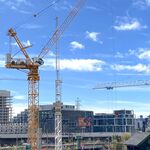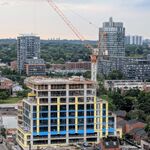junctionist
Senior Member
How so, it's perfect east of Avenue i.e. before the LRT goes underground ... the fact there are no retail shops has nothing to do with the built form ... I thinkNot really sure what the 'build form' is in this case.
What's perfect? The built form (the buildings around the street) provide decent to excellent population and employment density with little retail at ground level. Maybe you meant the actual infrastructure. In that case, yes, it was pretty much done according to the plans and "perfect". Most of St. Clair, however, needs attention to important final details and there seems to be little enthusiasm to finish it quickly. Where's the enthusiasm? It seems like most city departments treat maintenance and beautification as a liability rather than a prime opportunity to express their pride in their city.
As I said, it was generally more vibrant to the west. There were some new businesses but compared to the Avenue Road area, it was a lot better in terms of how many people were on the street.Anyway, how was it further west? - where the LRT resurfaces that's the area hurt worst by construction - last time I took a ride a did see a few new establishments but still a long way to go. The condo's going up in the area should help matters ... slowly ...
Stores and commercial areas which promote themselves as being accessible by subway also tend to do well. It's not surprising; plenty of cities have only subway networks yet still have plenty of vibrant neighbourhood commercial areas. Streetcars aren't a prerequisite.W. K. Lis said:On the streetcars, one can see the storefronts, where the store's sign becomes an advertisement for the store.
On the subway, one sees only the advertisements on the subway walls. Hopefully, some stores have put their own ads in the stations in their vincinity, but I don't know if the TTC would except ads for just one or two ads in a single station.




